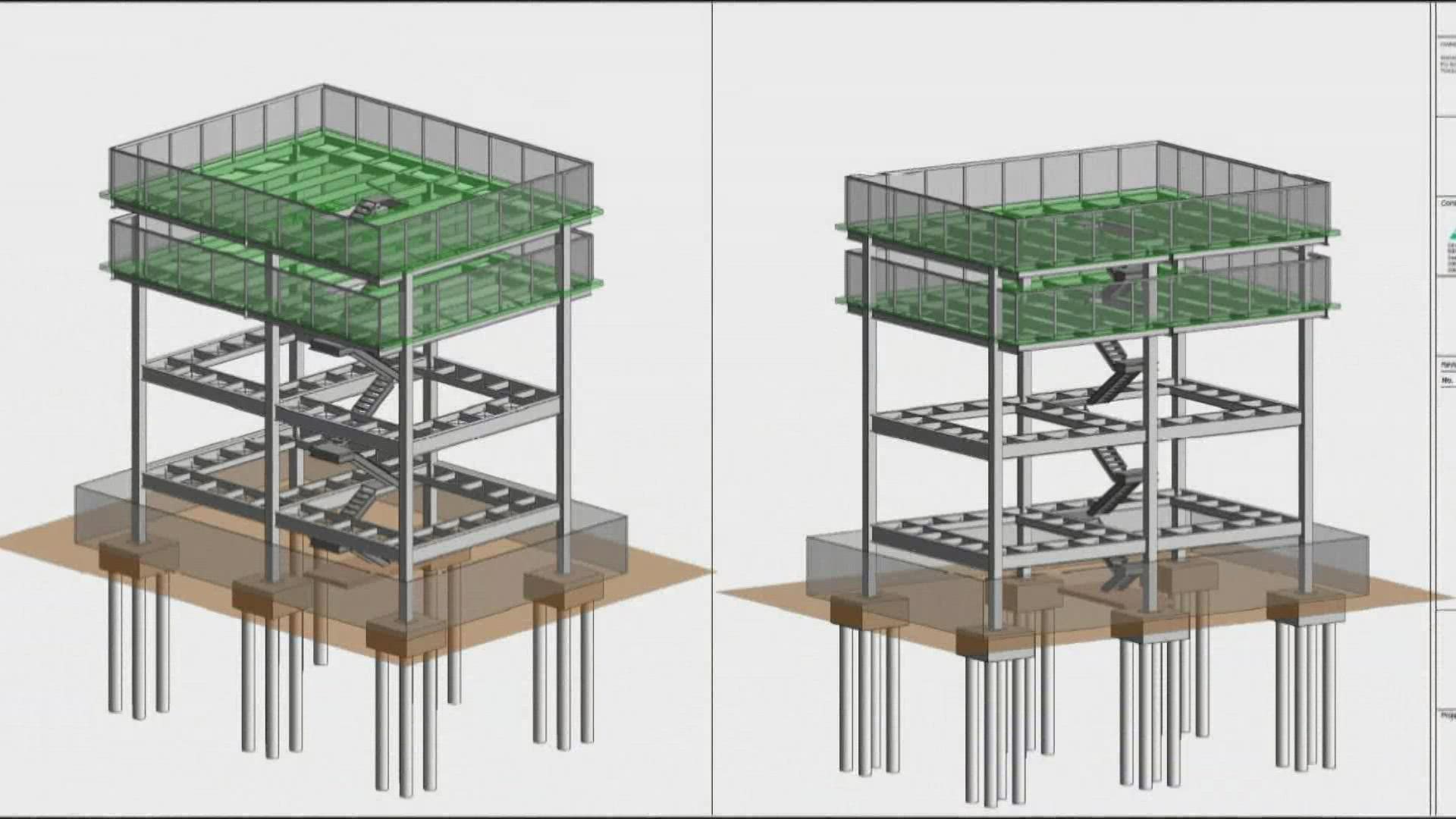OCOSTA, Wash. — Washington state needs dozens more vertical evacuation structures to protect those living along Washington's coast from a tsunami, according to a new assessment from Washington state's emergency management division.
Washington would need 58 more structures on the low end to 82 more structures on the high end to ensure people can safely evacuate from a local tsunami in time, according to the report. Low-lying and populated Ocean Shores alone could need as many as ten towers.
According to the report, Pacific County needs between 25 and 40 structures; Grays Harbor needs between 30 and 42 structures; and Clallam County needs one to three structures, depending on where they're built.
The study, which is the culmination of ten years of work, is a guide for counties, cities, tribes and other communities to be able to site, design and fund a variety of structures to give people in those areas a safe place to ride out devastating tsunami waves.
The report comes as Washington state is already leading the nation in developing and implementing these kinds of structures.
The new Ocosta school which opened just a few years ago south of Westport is a dual-use structure; a new building housing a gym and other school functions with a roof that’s more than 50 feet in the air, and wide stairways on each of the building's corners to allow not only students, but members of the community to get high above a tsunami.
Washington’s second vertical evacuation structure, which is a dedicated tower, is now under construction on the southern end of Shoalwater tribal land which would also serve as a refuge for nontribal members in Tokeland. Ocean Shores was recently awarded federal funding to build what could be the third tsunami evacuation structure, and Westport recently submitted an application for funding.
The state recommends future structures be within a 15-minute walk of populated areas, as waves could come less than 20 minutes after earthquake shaking stops. Since evacuation would follow a massive magnitude nine earthquake off the northwest coast, driving a car to a structure is considered impractical as roads are expected to be blocked by fallen trees, power lines and other debris.
Tsunami experts say it’s not just the risk of drowning from tsunami waves, but being crushed to death as the waves will pick up and move not only floating debris such as cars and logs, but parts of homes and buildings destroyed by the earthquake.
Dixon says the Federal Emergency Management Agency is partnering with local governments to fund towers on a matching basis. Those interested in learning about funding opportunities for their communities can learn more on the Washington Military Department's website.

